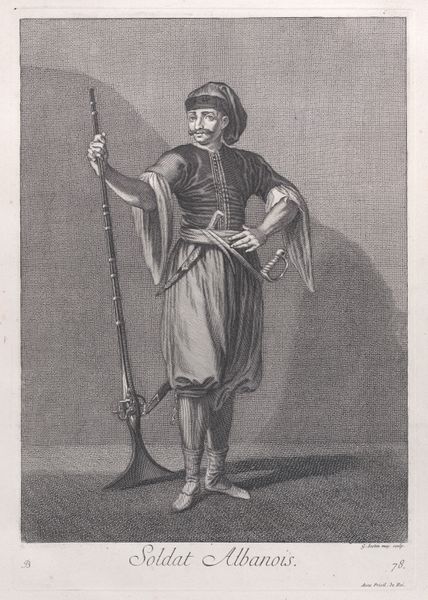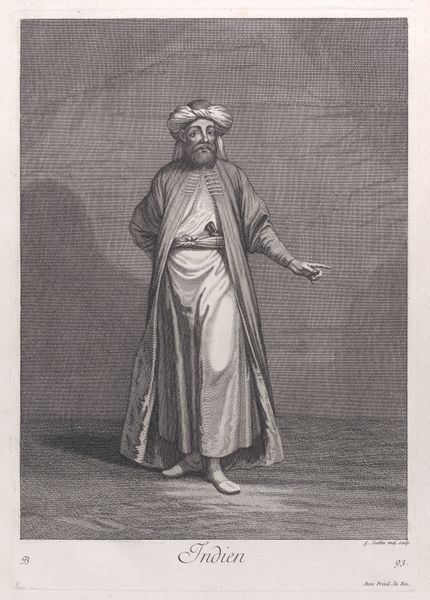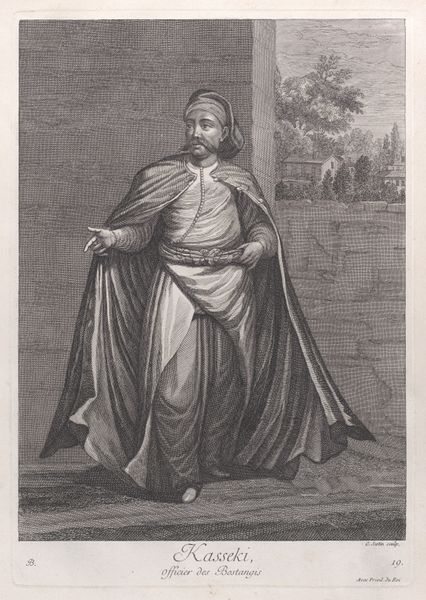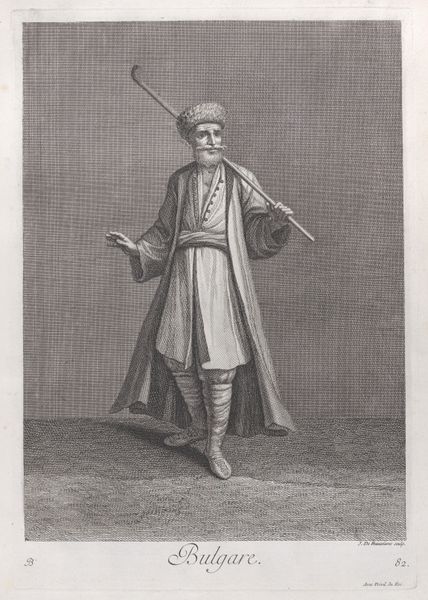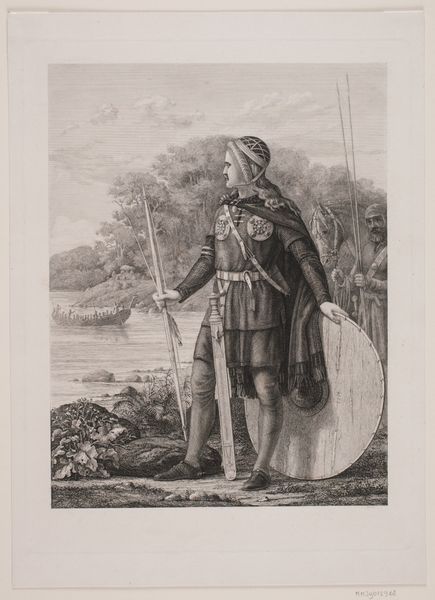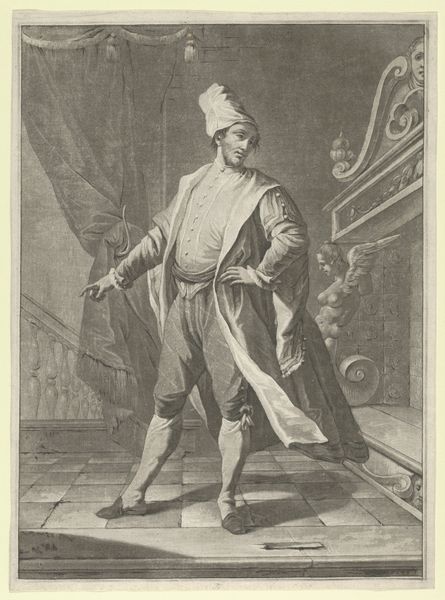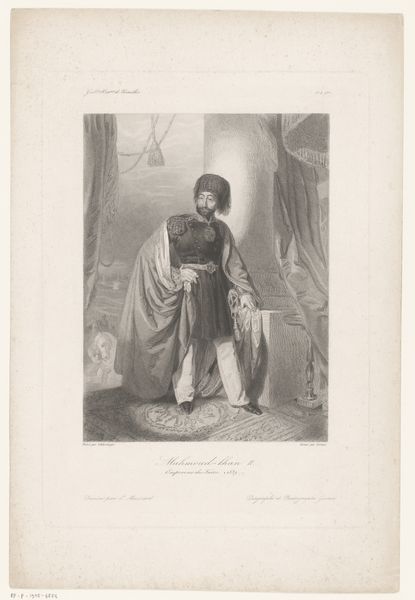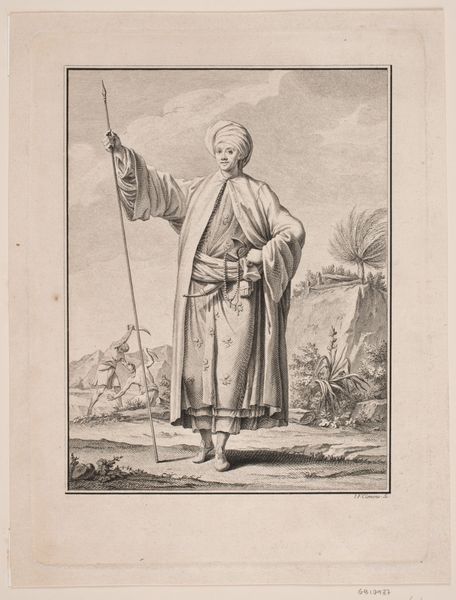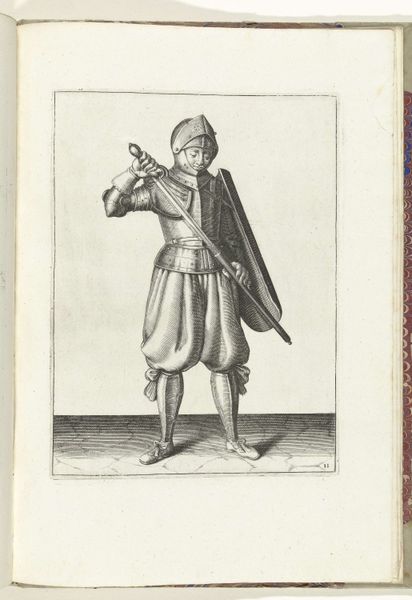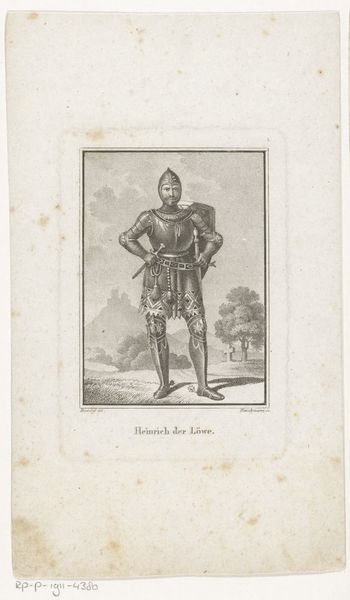
Serdinguesti, ou enfant perdu, plate 35 from "Recueil de cent estampes représentent differentes nations du Levant" 1714 - 1715
0:00
0:00
drawing, print, engraving
#
portrait
#
drawing
#
baroque
# print
#
men
#
portrait drawing
#
history-painting
#
engraving
Dimensions: Sheet: 16 1/2 × 11 15/16 in. (41.9 × 30.4 cm) Plate: 14 1/8 × 9 13/16 in. (35.9 × 25 cm)
Copyright: Public Domain
Curator: Immediately, I sense a stillness, an almost melancholic resolve etched on his face. The soft gradations of the engraving capture a solemnity despite the active gesture. Editor: This is "Serdinguesti, ou enfant perdu", plate 35 from "Recueil de cent estampes repr\u00e9sentent differentes nations du Levant," an engraving by Jean Baptiste Vanmour dating from between 1714 and 1715. Vanmour was a Flemish painter who became court painter to the Ottoman Sultan. Curator: The title itself, "Lost Child", is immediately evocative. The man’s pointing hand suggests a direction, but the expression hints at a deeper search, perhaps an internal compass failing him. Is he guiding or simply lost in thought, mirroring the name given to him? Editor: The figure is clearly an Ottoman soldier, or a member of the Sultan's entourage, given the opulence of his garb. It represents the vogue for 'Turqueries' in European art, an Orientalism through which Western audiences viewed the East. This was a period of diplomatic overtures between European powers and the Ottoman Empire, reflected in the demand for images of this kind. Curator: And see how Vanmour places him within a detailed naturalistic setting, the subtle tonality achieved with very fine engraving. The landscape is less imposing and grand, focusing attention upon his central presence in the pictorial space. He is not in command. Editor: Precisely. The inclusion of the musket signals not a heroic stance, but potentially reflects concerns over the 'balance of power' narratives of the time. It’s a portrait framed within a landscape reflecting the intricate dynamics of East-West relations and societal trends as reflected in art production. Curator: It also reminds us of how fashion shaped identity, each visual signifier a carrier of social and psychological meanings – and here even national identity open for contemplation as loss. Editor: Absolutely, by understanding its place in that dialogue, the work continues to provoke conversation about the intertwined nature of observation and imagination through images, just as it did centuries ago. Curator: Indeed. Vanmour, like this "Serdinguesti," prompts us to keep navigating meaning.
Comments
No comments
Be the first to comment and join the conversation on the ultimate creative platform.
